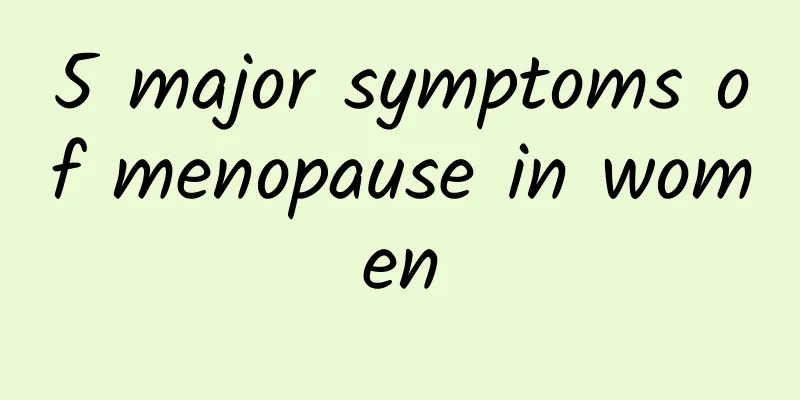What are the symptoms of adenomyosis?

|
The main symptoms of adenomyosis include heavy menstrual flow and painful menstruation, although some women may not have any obvious symptoms. Let’s take a closer look at these symptoms and how to deal with them. 1. Increased menstrual flow Adenomyosis may cause a significant increase in menstrual flow. This is because the area of the endometrium increases, causing more bleeding. For some women, this may not only be an inconvenience, but may also cause health problems such as anemia. It is recommended to add iron-rich foods such as red meat and spinach to your daily diet to help replenish the iron lost due to blood loss. 2. Dysmenorrhea Dysmenorrhea is another common symptom of adenomyosis, which usually starts a week before menstruation. The pain is mostly concentrated in the middle of the lower abdomen and may last until the end of menstruation. The degree of dysmenorrhea may worsen with time and age. To relieve pain, hot compresses on the abdomen or the use of painkillers are common methods, but it is recommended to use medication under the guidance of a doctor. 3. Progressive aggravation trend Dysmenorrhea and increased menstrual flow may become more severe over time and with age. This change may be related to changes in hormone levels in the body. Regular gynecological examinations can help detect problems early and take appropriate measures. 4. Asymptomatic cases It is important to note that not all women with adenomyosis will show obvious symptoms. Some women may accidentally discover that they have the disease during a routine checkup. Even so, regular health checks are still important because they can help us detect and manage potential health risks in a timely manner. 5. Psychological impact Long-term dysmenorrhea and increased menstrual flow may have an impact on women's psychology, leading to anxiety or depression. Appropriate psychological counseling and support are particularly important. Communicating with friends or professional counselors may help relieve psychological stress. 6. Lifestyle Adjustment Making lifestyle changes can also help relieve symptoms. Maintaining a regular sleep schedule, getting enough exercise, and eating a healthy diet can all have a positive impact on your body. Relaxing activities such as yoga and meditation may help reduce the discomfort of period cramps. 7. Medical consultation If the symptoms seriously affect the quality of life, it is recommended to consult a professional doctor in time. The doctor may recommend drug treatment or surgical intervention according to the specific situation. Understanding your physical condition and actively cooperating with treatment are the keys to managing adenomyosis. By understanding these symptoms and coping methods, we hope to help more women better manage adenomyosis. Maintaining a positive attitude and good health habits will go a long way in improving symptoms and quality of life. |
<<: What to do if dysmenorrhea still hurts after taking painkillers
>>: Is the endometrial thickness of 1.4cm serious?
Recommend
Is congenital uterine cyst hereditary?
Congenital uterine cysts are usually not directly...
High-risk groups for ectopic pregnancy: 6 types of women need special attention, and the last one must be seen by your husband!
Ectopic pregnancy, this scary-sounding medical te...
Is 11MM of pelvic fluid normal? How to judge
In clinical practice, the severity of pelvic effu...
Hyperprolactinemia Specialized Hospital
I believe that everyone knows the harm that hyper...
Unhygienic sex may cause uterine fibroids
Unclean sex may cause uterine fibroids. This is b...
When is the best time to have a painless abortion?
There is no "best time" for painless ab...
What should I bring to the hospital for an abortion? Which hospital should I go to for an abortion?
What should I bring to the hospital for an aborti...
8 tips for resisting the temptation of calories and losing weight
Fried chicken, hamburgers, French fries, cola, cr...
Can I only eat bananas when I have constipation? Try drinking "this 1 cup" of high-fiber juice to moisturize the intestines and relieve constipation
Who says you can only eat bananas when you are co...
What should you not eat during menstruation? Five foods you should not eat too much
Girls must pay attention to diet during menstruat...
What is the cause of bilateral polycystic ovary changes?
Polycystic changes in both ovaries are a common d...
What causes uterine fibroids? Can depression also cause uterine fibroids?
There are many reasons for female uterine fibroid...
The main causes of cervicitis
Cervicitis develops quickly, so women must go to ...
5 issues to pay attention to after artificial abortion
Question 1: Irregular menstruation and lower abdo...
Bento calorie bomb! Roast meat kilocalories No.1
The Hong Kong-style roast meat bento is very popu...









